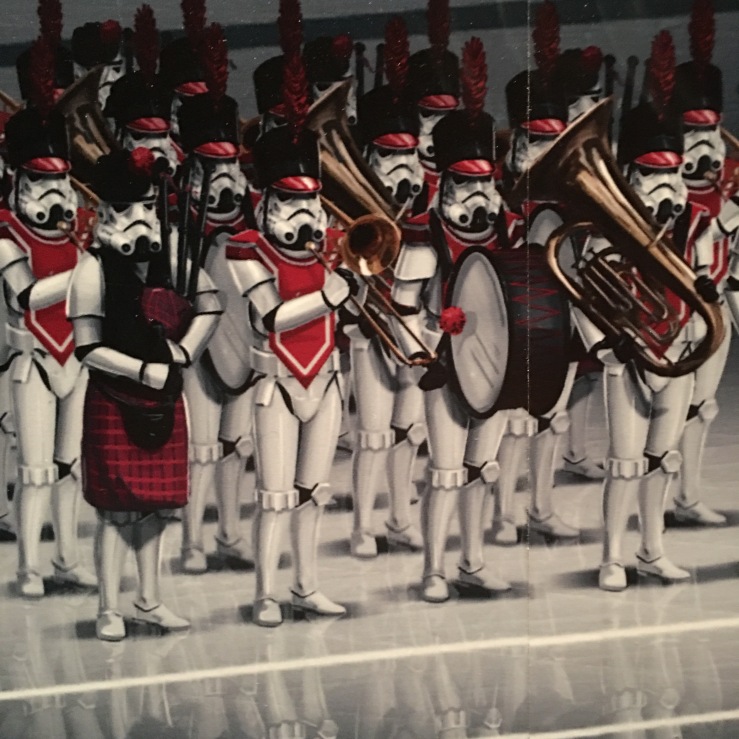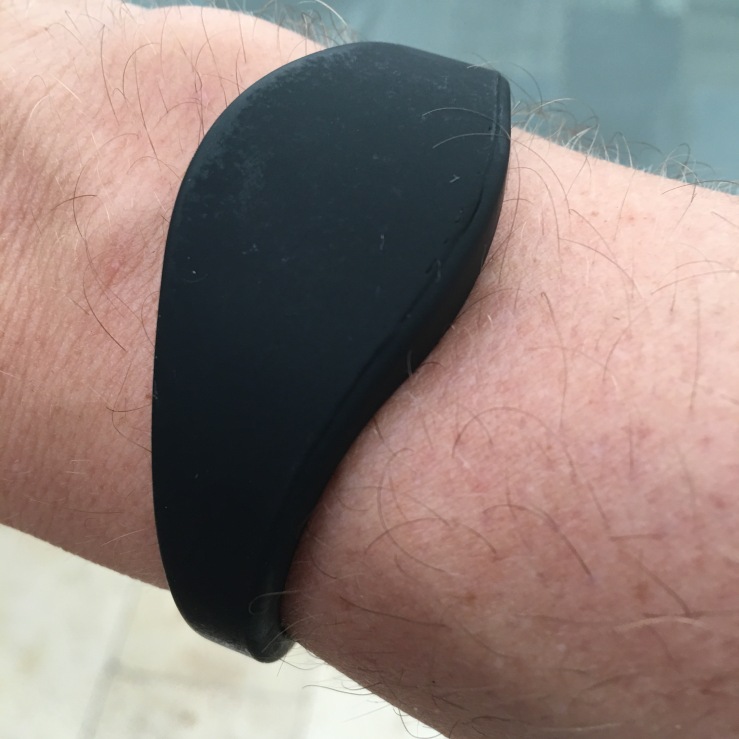
Better late than never, its a month since I went to two events in one week, and I’ve been so busy since then that I haven’t had time to write them up. Those of you who were following my Twitter stream live may ave some idea what excited me at the time, but for anyone else who might be interested, and more importantly for my own reflection, let me ram my thoughts together into this one post on both events.
We’ll start with Culture Geek in Kensington, which follows on from the M&H show, which I didn’t attend this year. This was the expensive one, with speakers flown in from other countries. I was pleasantly surprised to meet my colleague Alex there, so we were able to reflect a little between sessions, and there’s one thing especially we came away wanting to do, but more on that later. The conference touched on everything digital, including in-visit technology, but of course also plenty of on-line stuff. The first speaker was from that side of the field, Kimberly Drew, social media manager from New York’s Met museum. She drew on her experience as a person of colour doing a history of art degree, and how her life has changed during an internship at Harlem’s Studio Museum when a whole side of black art was revealed to her which had not been covered in her white-centric education.
Keen to share her epiphany, she and a friend started a Tumblr blog on Black Contemporary Art. Now that blog has over 200,000 followers, and she has unintentionally become “a poster child for diversity.” The Met weren’t looking for a “diversity champion” when they advertised the role of Social Media Manager (I asked her afterwards), but you can see why they snapped up such a dynamic, self-motivated blogger, with experience of, and reputation for, reaching out and expanding audiences.
Her work for the Met isn’t all about black art either. She sees the social media as the Met’s fourth space, alongside the 5th Avenue building, The Cloisters and the Breuer. Her role there is to share 5000 years of art; connect users with the collection; highlight the ways the museum serves art and art history, and to “humanise” the museum and create invitations to participate. This last is the objective that benefits, in theory, from her previous experience, but of course they all do. Reflecting on her talk what comes across most is authenticity. Its a challenge for cultural heritage organisations, to match that authenticity of enthusiasm for both the medium and the message, someone who lives and breathes social media and the cause.
Kimberly is a young woman who inspires, and shows us how to do it, and the organisation she works for is a springboard, not a water-slides forcing her in a corporate direction. She’s one to watch.

The most interesting presentation for my research was given by Joe McFadden of the Royal Opera House. they are trying a number of digital experiments as they redevelop one of their spaces, known as the Piazza, with the intention of increasing the number of daytime visitors. Currently only the tens of thousands annually, which for a central London space, is very few. Their work is in three broad areas: Transactional – things like ordering your interval drinks online, and paying with Applepay; Experiential – things like AR with hololens and VR (check out the work of the VOID) and post-show video on demand: and, Informational – things like personalised wayfinding (which made my ears prick up, but sadly when I quizzed Joe afterwards, he said they were struggling with the contending needs of different visitors at the same decision point, so It might not happen). We also talked about their current testing of an Alexa skill, so that Amazon Echo users could quiz their “household assistant” about whats on and even, possibly, buy tickets.
Which tied in with a fascinating presentation I saw later in the week at the Academy of Marketing’s Digital Customer Experiences event. There Prof. Merlin Stone of St Mary’s University talked about work he is doing on Baby Boomers and the heath service. These are “the largest generation of older people the world has seen”, but also the healthiest and longest living, the richest, most educated, etc etc. though its early days in the voice first market – he sees signs that they are also likely to be enthusiastic users of Alexa and other home voice assistants, and may well expect services (he was talking about health, but it applies equally well to Opera and Heritage, where baby-boomers are currently core market) to be provided by voice-first platforms.
Back to CultureGeek, Tim Wood of the Ballet Rambert showed us some simple online stuff that had proven surprisingly popular – live streaming of rehearsals. Not fancy dress-rehearsals, but studio work, the repetitive practice of moves and blocking. This is what set Alex and me off on a reverie about making a “slow TV” livestream event of a voyage down the length of the river Wey. One day….
 Apart from those presentations at CultureGeek, there was interest as well in Patricia Buffa’s discussion of e-Marketing the Fondation Louis Vitton to Chinese tourists. The Chinese market isn’t a big one for my market yet, they are mostly urban tourists, and ticking off the iconic sites. But if (when?) it becomes spreads into the countryside and independent travelling there’s stuff we can learn here: the importance of Weibo/WeChat; finding Chinese celebrity advocates; doing exhibitions in Chinese partner locations; and, interestingly, the ubiquity of the QR code – “in China your QR code is your business card”.
Apart from those presentations at CultureGeek, there was interest as well in Patricia Buffa’s discussion of e-Marketing the Fondation Louis Vitton to Chinese tourists. The Chinese market isn’t a big one for my market yet, they are mostly urban tourists, and ticking off the iconic sites. But if (when?) it becomes spreads into the countryside and independent travelling there’s stuff we can learn here: the importance of Weibo/WeChat; finding Chinese celebrity advocates; doing exhibitions in Chinese partner locations; and, interestingly, the ubiquity of the QR code – “in China your QR code is your business card”.
We also got insight from the Science Museum’s use of Kickstarter to fund the rebuilding of Eric, Britain’s very first robot. We were shown a really interesting content management system created by MIT, and heard about building digital systems for a City of Culture in Hull. There were also some lovely experiments in mixed reality from the National Theatre, including a VR Alice in wonderland that the viewer experienced sitting on a toilet, and Draw Me Close, a VR opera that puts the audience in the naively drawn world of five year old Jordan. I’m not sure how sustainable the business model of this experience might be, the cast outnumbers the audience (of one) so that as the virtual Mum hugs you, or tucks you up in bed, a physical cast member also does it to you, to make an fully sensory experience. Its the closest we’ve come yet to the Ractors of The Diamond Age.
The Digital Customer experiences event was more commercial (after all, it was hosted by the Academy of Marketing at the Direct Marketing Institute). I had been invited to give a presentation, the abstract for which I posted a few weeks back. Apart from Professor Stone, whom I spoke about above, Dr Julia Wolney introduced the day with an overview of all the points in the customer “life cycle” where AI has growing potential.
Ana Canhoto gave a very interesting presentation about the conflicting attitudes to tracking and personalisation. As one respondent told her, its:
… creepy. But, then, it is just also very useful.
Dr Wolny returned to talk about her research into wearables, and the quantification of the self. As a recent wearer of an Apple watch, which I am using to incentivise my own movement, I was very interested in what she had to say. However based on her findings I’m not sure I’m typical. Women are more likely than men to track their fitness, but men are more likely to share their latest achievements. (I am not.)
But perhaps the most intriguing presentation was from Dr Fatema Kawaf – she presented a research technique I had not heard of before, but one I think may be valuable to evaluating heritage experiences. Its called The Repertory Grid, and as the linked article shows it comes out of psychology, a technique as a method to help the individual unveil his or her constructs. As Kawaf demonstrated though, it enables participants to use their own words to construct their understanding of experiences too. Kawaf was thinking about the retail experience, but I wonder if its ever been applied to heritage?








